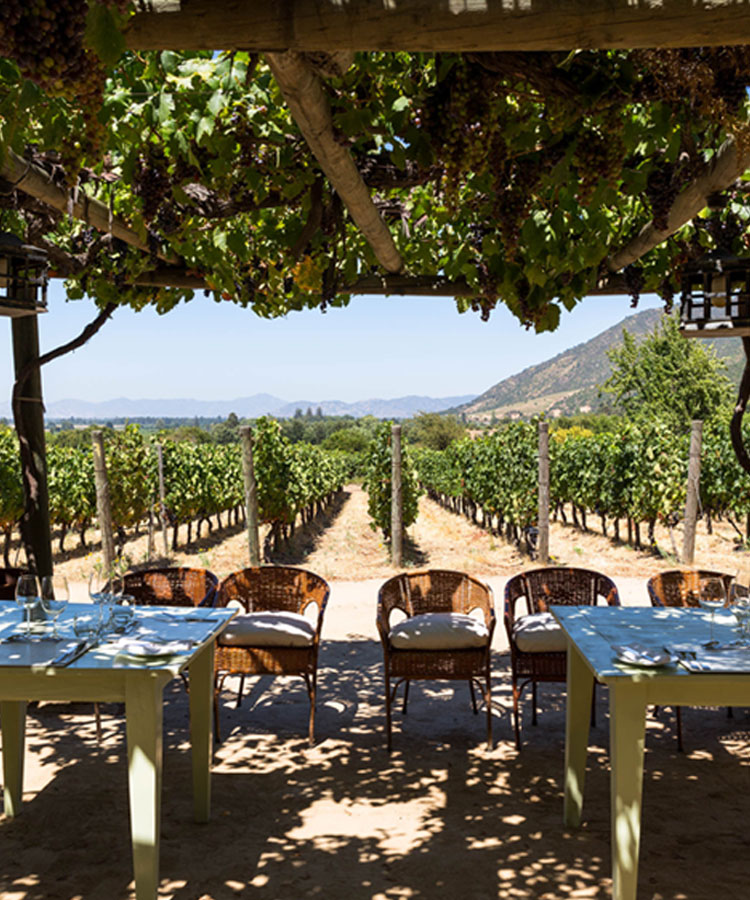
If you venture just outside of city limits in Santiago, Chile’s bustling capital, the scenery quickly shifts from urban to agrarian. Rolling valleys extend in all directions, lined with neat rows of curled grape vines.
This is Chilean wine country, a long and skinny stretch of countryside that spans more than 2,600 miles from top to bottom. Traversing the entire distance by car would take weeks when you account for all the required stops — wineries, restaurants, breathtaking vistas — but it’s a trip well rewarded with world-class vintages and delicious meals. For those looking for just a taste, the country still has so much diversity to experience on even the shorter trips.
Chilean wine country at large is not a single region at all, but a series of valleys differing in size and elevation, all noted for their microclimates and transversal rivers that guide cooling breezes from the Pacific Ocean, which provide ideal temperatures for ripening grapes.
To take in as much of Chile’s wine-soaked charm as possible, one smart plan is to start in the north and make your way south. Admittedly, you could drink your way up and down the countryside for a year and still not sample everything — but there’s no harm in trying! We’ve crafted a four-day excursion to give you a taste of all things Chile wine.
Day 1
Most international visitors to Chile fly into Santiago, so, after you arrive, you’ll want to connect to another 45-minute flight to La Serena to begin your wine-drinking odyssey. Stop in the seaside resort town; founded in 1544, it’s the second-oldest city in the entire country. Linger for a few hours to take in La Serena’s gorgeous colonial architecture and palm-tree-dotted beaches. When hunger strikes, hit up ceviche spot Jack Fish for colorful plates of fresh fish splashed with tangy citrus.
Head out and take Highway 41 to the Elqui Valley, Chile’s northernmost winegrowing region. The area has a cool desert climate, with dry summers and mild winters. Strong winds from the Pacific Ocean and the Andes Mountains do wonders for the grapes grown here, which range from Cabernet Sauvignon and Syrah to Pinot Noir and Chardonnay. It helps, too, that the soil is full of stones and gravel — not great for most crops, but perfect for vines that require drainage.
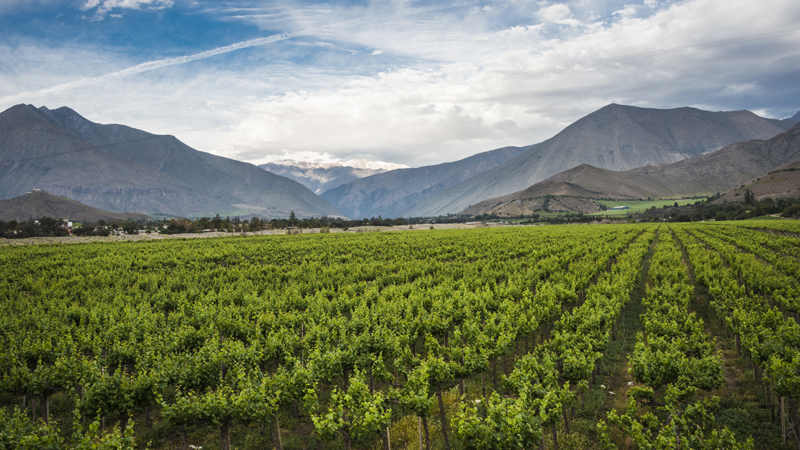
Hit up one of the many pisco distilleries in the area, such as Pisco Mistral Distillery, Fundo Los Nichos, and Doña Josefa de Elqui. Made from grapes like Muscat and Quebranta, pisco is Chile’s most popular spirit.
Once darkness falls, it’s time to go stargazing: The Elqui Valley is home to the world’s first International Dark Sky Sanctuary. Stop by the Cerro Mamalluca Observatory for a tour of the evening sky. Once you’ve had your fill, trek back to La Serena and spend the night in the comfortable, beachside Club La Serena Hotel.
Day 2
Journey five hours south on scenic Route 60, which hugs the great blue expanse of the Pacific Ocean, until you reach Chile’s Aconcagua Region. It’s home to the highest peak in the Andes, and, in recent years, has earned acclaim for rich red wines that rival France’s best. This is due in part to the cool daily breezes that blow in from the Pacific Ocean, which moderate the region’s otherwise high temperatures and lower the risk of vine diseases.
Your first stop is Viña San Esteban in the Aconcagua Valley, which grows a huge range of grapes, from Cabernet Sauvignon and Merlot to Carménère, Syrah, and Sangiovese. Take a guided tour of the vineyard before heading to the tasting room. Don’t leave without dropping by the archaeological park located within the Viña San Esteban estate, which has 1,000-year-old Inca rock carvings.
Next up is Viñedos Veramonte, an all-organic operation approximately two hours southwest by car. The Casablanca Valley is known for a cool morning fog that rolls in from the sea, making it ideal for growing white grapes like Sauvignon Blanc and Chardonnay, plus cool-climate reds like Pinot Noir, Merlot, and Syrah. Taste all these at Viñedos Veramonte; afterward, bike through the vineyards on a guided cycling tour or drop into the winery’s Calicata Restaurant for a lunch of steak sandwiches and ruby red beef tartare.
While you’re in the area, hit up nearby Emiliana Organic Vineyards. Taking advantage of Chile’s diverse terroir, Emiliana has vineyards in seven separate Chilean wine valleys. In the tasting room, opt for Emiliana’s signature wine, Coyam, a juicy, deeply flavorful red blend, or the fruity, creamy Signos de Origen white blend.
There’s one more stop today: Viña Casa Marin, nestled in the San Antonio Valley. Though just a 40-minute drive from the Casablanca Valley, the soil here is richer in calcium and the vines are closer to the sea, which help create light-bodied, aromatic, and mineral-rich wines. Try a few in Viña Casa Marin’s tasting room; the winery’s Cartagena label includes Sauvignon Blanc, Riesling, Gewürztraminer, and Pinot Noir.
Exhausted? Fair enough. Fortunately, Viña Casa Marin has an on-property guest house, Villa Miramar. The space is surrounded by Sauvignon Blanc vines, and rooms have majestic views of the Pacific Ocean and the town of Lo Abarca.
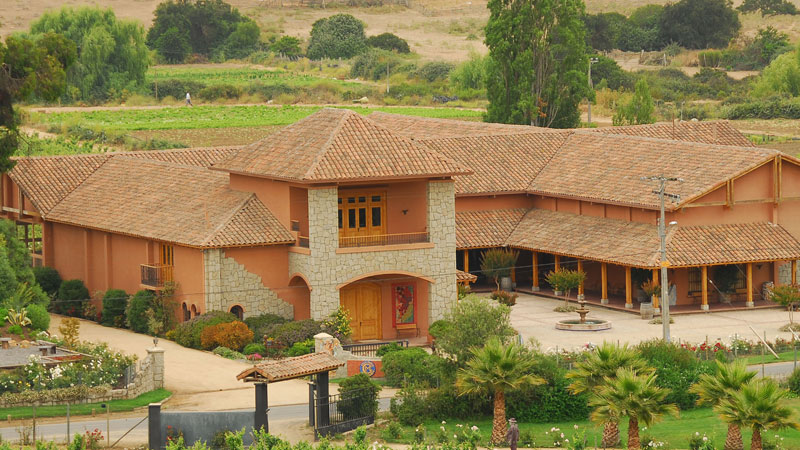
Day 3
Today and tomorrow are all about the Central Valley region, which produces the most wines in Chile and is likely the country’s best-known region internationally. It is uniquely rustic; horse-drawn carts are still a common sight here.
Head first to Don Melchor Casona, a manor house owned by Concha y Toro, the largest producer of Latin American wines. Try the operation’s signature wine, a distinctive Cabernet Sauvignon aged in French oak barrels.
Next, pile into the car and drive two hours south, deep into the Maipo Valley, one of the region’s most famous areas. Pop into Viña Ventisquero to try its Cabernet Sauvignon; then, take a 30-minute ride to the Colchagua Valley’s Viña MontGras. Recharge with a pour of the Ninquén red blend and one of Viña MontGras’s pre-packed picnic baskets chock full of bread, cheese, fruit, cured meats, and more.
The last stop today is Viña Los Vascos, a Chilean winery owned by France’s Domaines Barons de Rothschild. The volcanic soil here is sandy and clay-like, which yields flavorful Cabernet Sauvignon, Carménère, Syrah, Malbec, and Chardonnay. Tour the facilities to try wines like Le Dix de Los Vascos, a complex red blend made with fruit from 70-year-old Cabernet Sauvignon, Syrah, and Carménère vines.
Rest up for the night at the nearby Hacienda Historica Estate, a fully restored, 18th-century country house surrounded by elegant grounds.
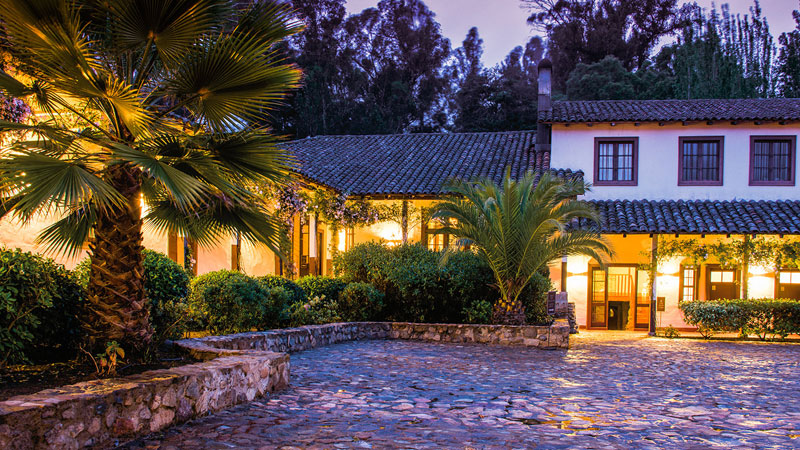
Day 4
Your final day in Chilean wine country takes you deeper into the Central Valley region’s Maule Valley, one of the oldest growing regions in the country. It has some of the coolest temperatures of any Chilean grape-growing region, and, thanks to the Maule River, its alluvial soil is rich with grape-friendly granite, red clay, loam, and gravel.
Kick off the day at the 11,000-acre Viña Vik Winery, which spans a restaurant, lounge, spa, wine shop, and 22-suite hotel. Try the VIK wine, a fruit-forward and dynamic blend similar to big, flavorful Bordeaux.
Afterward, it’s time for a little road trip: Two hours south leads you to VIA Wines’ beautiful glass-enclosed tasting room. Set among the vines at San Rafael Farm, and suspended over a peaceful lagoon on the property, the building looks as though it’s floating. It’s a magical backdrop for sampling Red One, a full-bodied blend with notes of fresh fruit, coffee beans, vanilla, and cocoa.
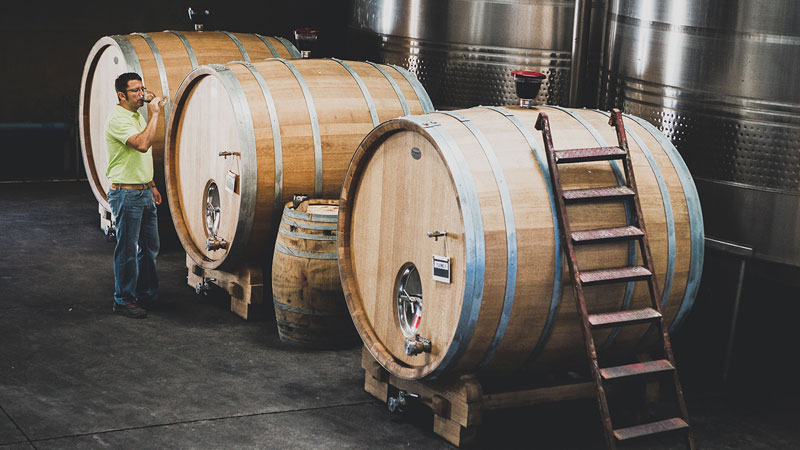
Finally, make your way to Viña Bouchon’s Mingre Estate. The Mediterranean climate means summertime temperatures can swing anywhere from 47 to 86 degrees, which is perfect for attaining a high color concentration in the grapes. There are some 50 acres’ worth of them here, spanning Cabernet Sauvignon, Chardonnay, Carménère, Cabernet Franc, Petit Verdot, Syrah, Carignan, País, Garnacha, and Mourvèdre. Visit the winery’s main building, a plain adobe structure with clay floors that dates to the 1890s, and then head to the tasting room to sample the Bouchon Extra Brut made with País and Cinsault grapes.
With that, your adventure is complete, and it’s time to head back to Santiago. But don’t worry: There’s plenty more to eat and drink on your next trip back.
This article is sponsored by Wines of Chile. Taste the Unexpected.
